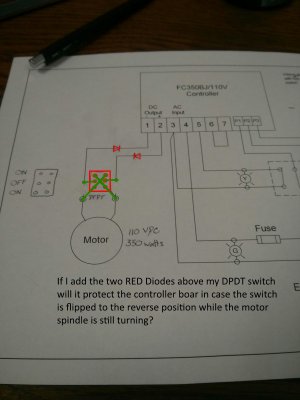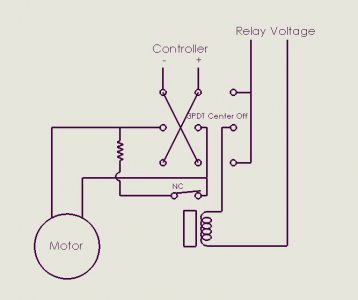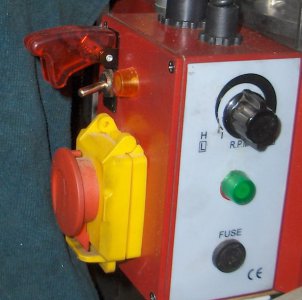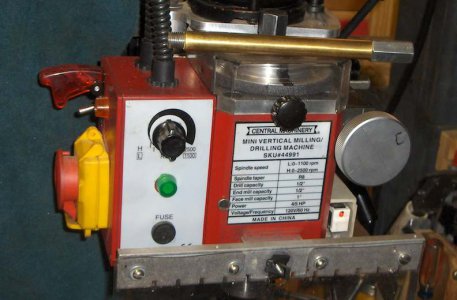Hi all, sorry, I have very little experience with electrical circuits.
I want to add a Motor Reverse switch (DPDT) to the Harbor Freight mini mill spindle.
But from what I've read, if the spindle is still turning, when the power is off, the motor acts like a generator and produces current.
If I want to protect the control board from burning up, would this set up work? Adding two diodes before the motor and switch, so that current could not flow back into the board?
Thank you!

I want to add a Motor Reverse switch (DPDT) to the Harbor Freight mini mill spindle.
But from what I've read, if the spindle is still turning, when the power is off, the motor acts like a generator and produces current.
If I want to protect the control board from burning up, would this set up work? Adding two diodes before the motor and switch, so that current could not flow back into the board?
Thank you!

Last edited:




